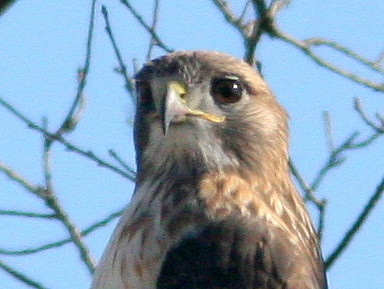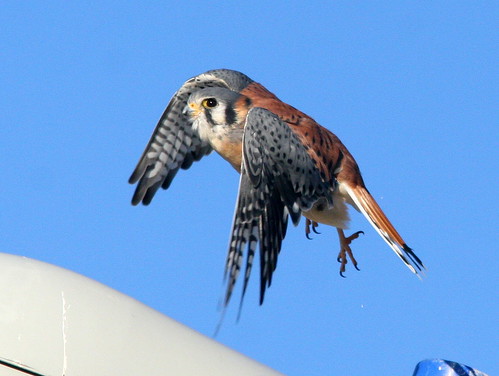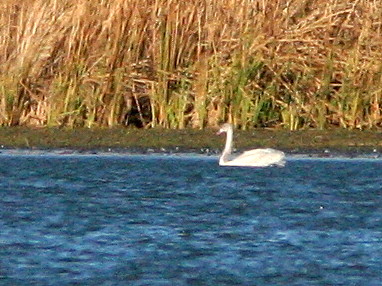As may be evident from past blogs, I especially enjoy photographing the “little guys,” such as sparrows and warblers. During summer, there are very few species of smaller birds near our Florida home. Capturing images of small birds usually takes considerably more patience and stealth than is required for the herons and storks in Florida. Since the “little brown jobs” are usually hiding in shrubs and flitting about, their portraits are often marred by intervening vegetation, shadows and poor exposure. Here in northeastern Illinois, one bird obligingly came out into the sun for his portrait.
At Nearby Nelson Lake this past week, this Fox Sparrow sang quite loudly, despite the near-freezing temperature:
There are times when a flash would have greatly improved my photos, but so far I have not invested in tripods or flash attachments. Either would reduce the mobility I enjoy with my present 300 mm f/4 IS lens with a 1.4x extender, a combo that is relatively easy to hang around my neck or rest in a holster during long walks. However, I am tempted to get a flash unit. Even a bird in full sun may pose a challenge when it is overhead and seen against the sky.
For example, this Red-bellied Woodpecker’s underparts remain in deep shadow, for lack of a fill-flash:
Likewise, the back of this topsy-turvy little Black-capped Chickadee is under-exposed; luckily, its eye did catch the light:
Like so many sparrow shots, this earlier shot of a Fox Sparrow might have been perfect, except for those annoying little branches and the strong contrast caused by the late morning sunlight:
I was lucky to find this Red-tailed Hawk along the road, providing a side view with the sun coming in from the right; a flash might have added a “pop” factor:
Here is a close-up crop of its expressive face, which was in full sun:
A smaller and more colorful raptor, a male American Kestrel, stared at me from atop a streetlight this morning:
Warm low sunlight enhanced its colors as it stretched its wings and tail to display beautiful plumage. There is something extra nice about natural light:
Using the car as a blind, I rolled up closer to the Kestrel. Just as I pressed the shutter, it took off:
A lone swan showed up along the far shore of Nelson Lake, about a half-mile away. Without my 15-60x Kowa spotting scope, I could not distinguish any field marks that would nail down its ID. It was very light gray, suggesting it was an immature bird. It held its neck quite straight, not in an S-curve as do the more common Mute Swans. Tundra Swan is a possibility– note the light area at the base of its bill. I do not use a tripod, another trade-off, in addition to not using a flash attachment, that allows me greater mobility in the field. After lugging a scope and tripod for years, when we led bird walks, I tried it again on a three-mile hike in Florida and nearly died of heat exhaustion. As for the flash, I feel my resolve is weakening!
My hand-held photo, taken with a 420 mm lens system (300x with a 1.4x extender) is about equivalent to the view through 8x binoculars (click on image for more views– any ideas about its ID?):


















